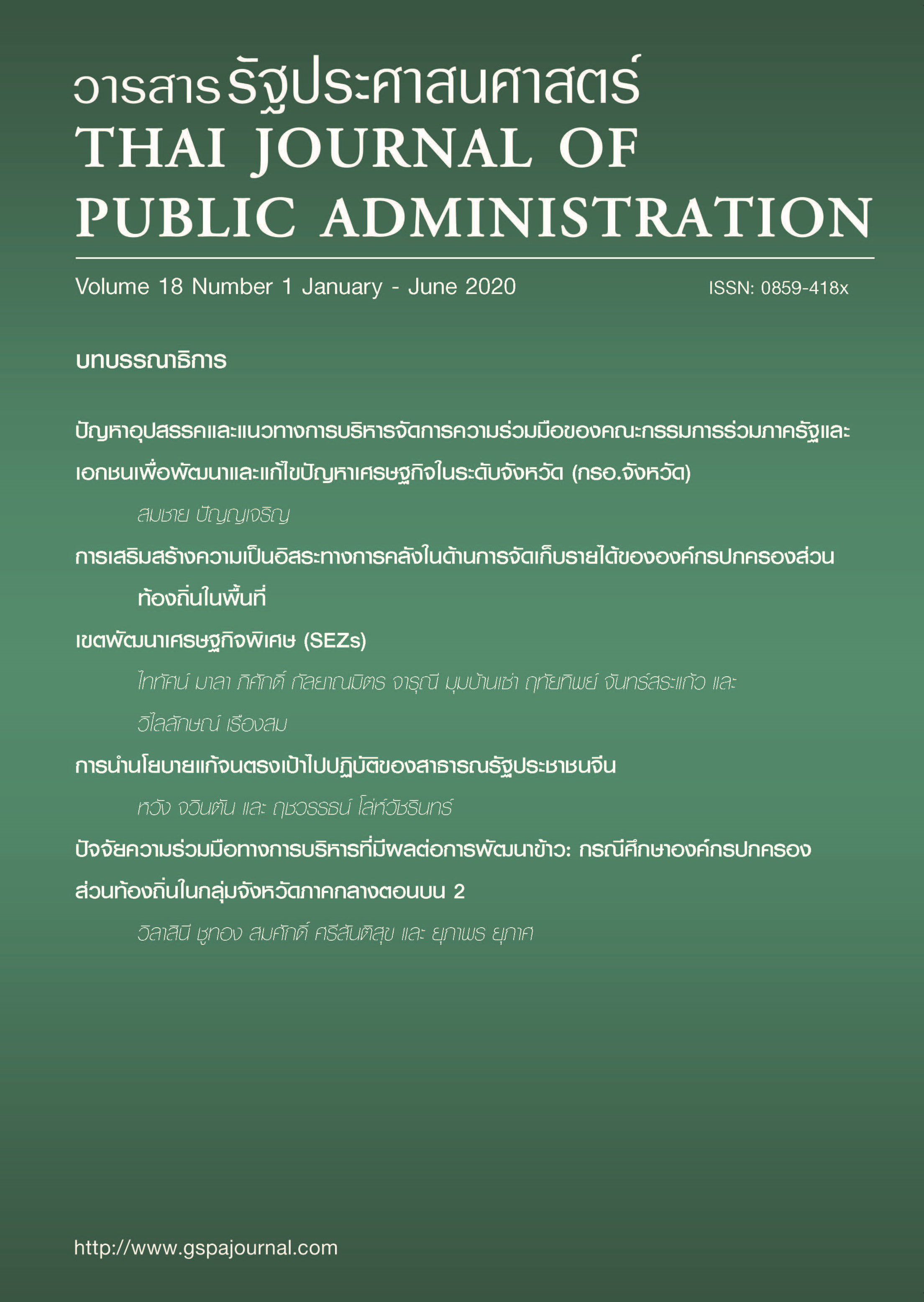The The Policy Implementation of Precision Poverty Alleviation of the People’s Republic of China
Keywords:
policy implementation, China, Precision Poverty Alleviation, povertyAbstract
This current article aimed to study the implementation of precision poverty alleviation policy in China and to propose guidelines to solve the poverty problem in Thailand. The authors employed a documentary research methodology by studying, analyzing concepts, theories related to this research issue.
It was found that there are several methods and mechanisms involved in the Specific Process for Poverty Alleviation Policy, such as work guidance mechanisms and resource mobilization mechanisms. Mechanism for specifying the target audience Mechanism of operation. And evaluation mechanisms by independent third parties, etc. The mentioned methods and mechanisms have changed the way Chinese traditional poverty is resolved and will benefit the poor and effectively solve the poverty in China. The Thai government has a need to formulate a local poverty resolution policy and carry out projects related directly to the poor. The government must urge all sectors of the organization to participate in the project to increase work efficiency and train the poor to be alert and participate in the process. In addition, government and local government organizations at all levels must have a clear division of authority, strengthen the audit system to ensure transparency in the work and establish a rigorous assessment system to guarantee the effectiveness of various project operations.
References
ยุทธสิทธิ์ กมลขันติไพศาล & วราภรณ์ จุลปานนท์. (2019). ปัญหาความยากจนของประเทศไทย-กรณีศึกษา จังหวัด มุกดาหาร. มหาวิทยาลัยรามคำแหง.
World Bank. (2011). Poverty headcount ratio at $1.90 a day (2011 PPP) (% of population). Retrieved May 9, 2019, from https://data.worldbank.org/indicator/SI.POV.DDAY
Warang Tatiyanunt. (2016). 泰国城乡发展基金扶贫绩效研究. 浙江大学. http://wap.cnki.net/touch/web/Dissertation/Article/10335-1016243266.nh.html
宝鲁.(2016).《区外产业扶贫经验对我区的启示》.《北方经济》.
http://www.cnki.com.cn/Article/CJFDTotal-BFJJ201603008.htm
亚洲博鳌论坛.(2019).亚洲减贫报告.
http://www.boaoforum.org/2019kwqt/47654.jhtml
河南日报.(2017).刘井固村的脱贫突围.
http://newpaper.dahe.cn/hnrb/html/2017-06/07/content_153079.htm
红柳.(2016).电商扶贫兴未艾.《中国扶贫》.
http://www.cnfpzz.com/column/lanmu4/zhuanjiaguandian/2016/1110/9903.html
李坤.(2015).贵州扶贫开发决战决胜.《当代贵州》 .
http://www.cqvip.com/QK/80510A/201523/664949799.html
天津经济.(2017).涓滴效应.
http://www.cnki.com.cn/Article/CJFDTotal-TIAN201712017.htm
中华人民共和国教育部.(2017).教育扶贫的“静宁模式”.
http://www.moe.gov.cn/jyb_xwfb/s5147/201707/t20170726_310111.html
中华人民共和国教育部. (2019). 2018年全国学生资助工作进展情况.
http://www.moe.gov.cn/fbh/live/2019/50353/sfcl/201902/t20190228_371562.html
中华人民共和国国务院.(2014).2014年政府工作报告.
http://www.gov.cn/guowuyuan/2014zfgzbg.htm
万林.(2013).南江县探索农村廉租房济贫机制.《城乡建设》.
http://www.wanfangdata.com.cn/details/detail.do?_type=perio&id=cxjs201309022
汪三贵&郭子豪.(2015).《论中国的精准扶贫》.《贵州社会科 学》.
http://www.cnki.com.cn/Article/CJFDTotal-GZSK201505023.htm
杨颖&胡娟.(2013).贵州扶贫开发成效,历程及挑战思考. 《开发研究》.
http://www.cnki.com.cn/Article/CJFDTotal-KFYJ201302023.htm
于长存.(2017).国外扶贫经验对我国精准扶贫的启示—以美国 印度泰国为例.对外经贸.
http://www.wanfangdata.com.cn/details/detail.do?_type=perio&id=hljdwjm201708036
张妍妍.(2018).浅论我国精准扶贫现状.《商情》.
http://www.fx361.com/page/2018/0328/3321452.shtml
郑兴良&李香泉.(2015).《扶贫对象精准识别探索》.《宜宾日报》.
http://np.jj831.com/html/2015-04/18/content_30535.htm
钟声.(2001). 略谈“部分先富”与“共同富裕”.琼州大学学报.
http://mall.cnki.net/magazine/Article/QZDX200102002.htm
Downloads
Published
Issue
Section
License

This work is licensed under a Creative Commons Attribution-NonCommercial-NoDerivatives 4.0 International License.



